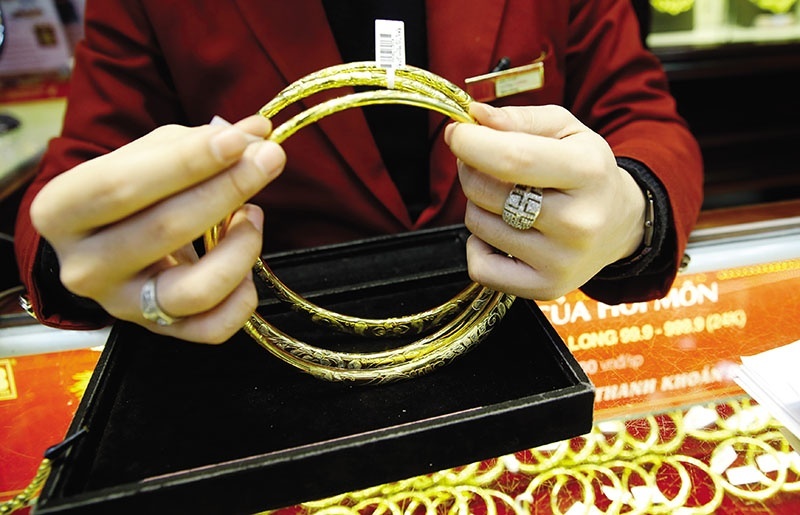The factors influencing the future of investment in gold
What is the current status of the gold market and the factors affecting a jump in prices?
 |
| Exness specialist Michael Stark |
The main factors aren’t really technical, they’re actually almost entirely fundamental. With most major central banks having cut rates to zero or nearly zero, the traditional factor against buying gold, meaning that it doesn’t pay interest to holders, is negated.
While there’s no evidence yet that record low rates and record high quantitative easing (QE) in most major economies are causing a significant uptick in inflation, traditionally you’d expect to see inflation increase in such an environment. This makes people want to buy gold as a hedge against lower purchasing power of their savings.
Furthermore, the new money created by QE in March and April initially went only into shares, but since May it has been clear that other markets like gold and crypto are also receiving inflows of fresh liquidity.
The other important factor apart from monetary (and, to a lesser extent, fiscal) policy is the dollar’s loss of strength over the last few months. There are a range of factors behind this, including both overvaluation for a long time and the generally disorganised governmental response to COVID-19 in the United States, but the practical result is that gold is cheaper for holders of most currencies since the metal is usually priced in dollars.
The final key consideration which I think is often overlooked is production. Both the pandemic itself and its resultant economic effects have been enormously disruptive in various emerging economies which produce and export significant amounts of gold. South Africa is maybe the most prominent example.
Unless the current high demand starts to sink as a result of high prices, we can probably expect focus on supply issues to increase over the next few months.
Some investors have rushed to buy gold with the hope of making a profit but also prepared to suffer a loss. Do you think traders should try to increase their assets this way?
 |
| As with any time of fiscal difficulty, gold is rising as an investment channel |
From the point of view of a trader this basically makes sense. In pretty much any situation except when you have pegs or similar, a market can only go up or down. It’s almost unknown for prices to remain stable for an extended period. Generally, whenever you perform any operation related to investing or trading, you need to be prepared to make a loss. You just need to try to increase the likelihood of making a profit and decrease the risk of loss if you can.
For gold now, this means buying the dips. Most traders aim to trade with trends and enter during consolidations. This is more likely to succeed than buying or selling at extremes because you don’t need a new extreme to make at least a small profit, plus if you’re right and a new extreme is reached you’ll make more money than if you entered at the previous high.
What is your advice for private investors and traders during high risk periods, and how should they manage risk when trading?
While I’d stress that Exness can’t give any advice to investors or traders for regulatory reasons, I can say that based on experience, the most important way to manage risk is to develop the right mindset for trading and investing.
It’s critical to avoid greed and to act based on realistic goals and expectations.
If you jump into a market and throw money around in the hopes of making it big in a few weeks, you’re setting yourself up for failure. This is always true, but it’s particularly the case around now when most markets are still highly volatile.
I think it is Warren Buffet who was meant to have said, “To succeed, be greedy when others are fearful and be fearful when others are greedy”. Whoever it was, they were pretty spot on: if you see prices jumping and everybody has dollar signs for eyes, it is best wait it out.
On the other hand, while you do obviously want to buy at lower prices, it’s never a good idea to ‘catch the knife’ during a selloff because you can never be completely sure when it’s going to end. Gold, blue chip shares, and major indices historically go up in price over time, so there’s really no need to rush in and buy when you see lower prices. You can enter in the middle of a trend and exit a fair bit before the end but still make a profit.
What the stars mean:
★ Poor ★ ★ Promising ★★★ Good ★★★★ Very good ★★★★★ Exceptional
 Tag:
Tag:
Related Contents
Latest News
More News
- Shifting customer habits define new banking battleground in the digital age (April 23, 2025 | 11:59)
- Optimism goes on for market status hike (April 23, 2025 | 08:00)
- S&P 500 ends down 2.4% after Trump slams Fed chief again (April 22, 2025 | 11:05)
- Gold hits record, stocks slip as Trump fuels Fed fears (April 22, 2025 | 10:54)
- Several small banks eyeing major exchange listings (April 21, 2025 | 17:27)
- Gold hits record, dollar drops as tariff fears dampen sentiment (April 21, 2025 | 15:11)
- World Financial Innovation Series redefines future of financial services (April 21, 2025 | 10:21)
- Bybit Technology interested in sandbox on crypto assets (April 18, 2025 | 17:34)
- Revitalising and unleashing finance strategy for global green growth (April 18, 2025 | 11:42)
- IFC proposes $60 million global trade finance for Maritime Bank (April 17, 2025 | 15:59)
























 Mobile Version
Mobile Version